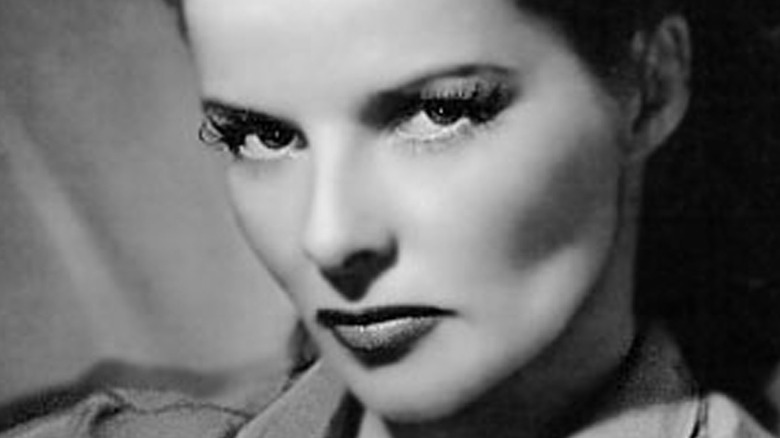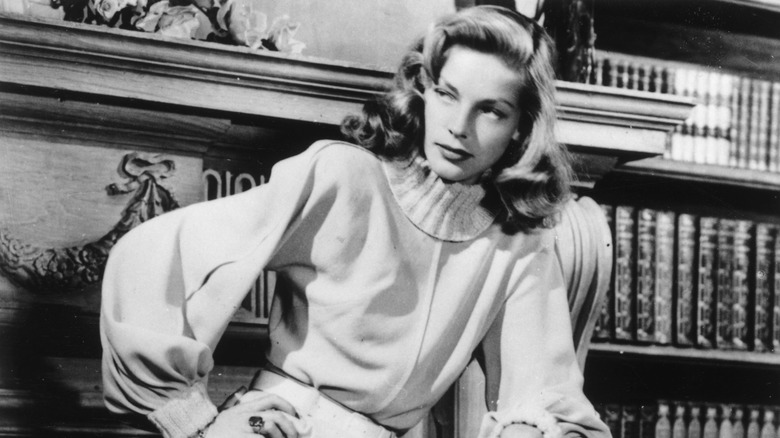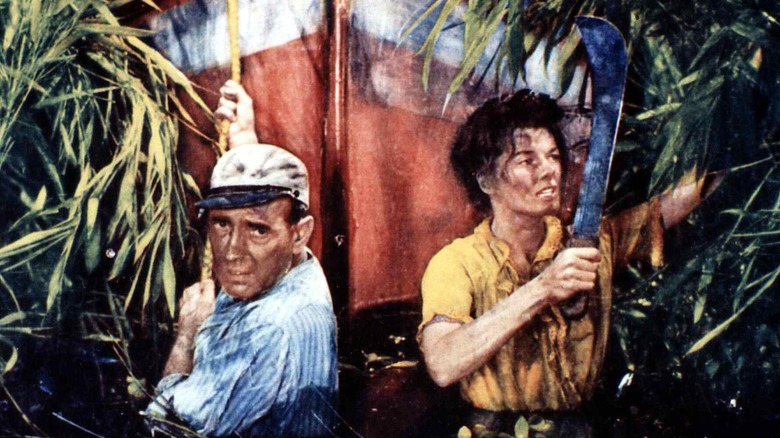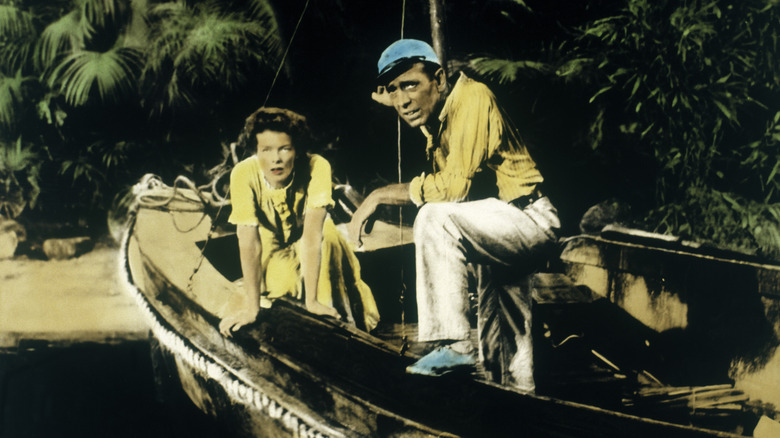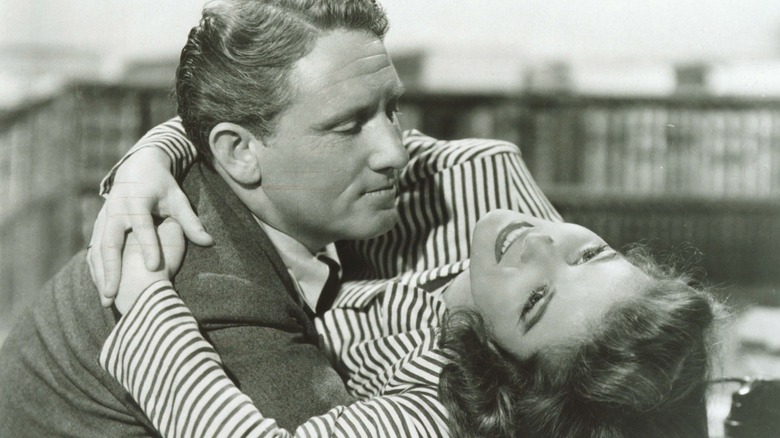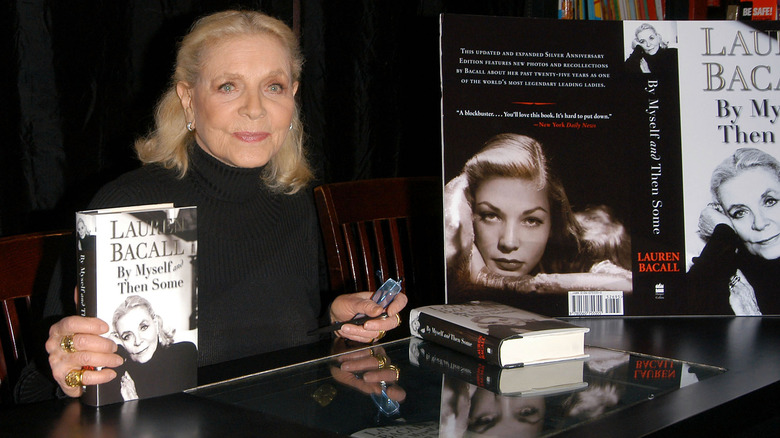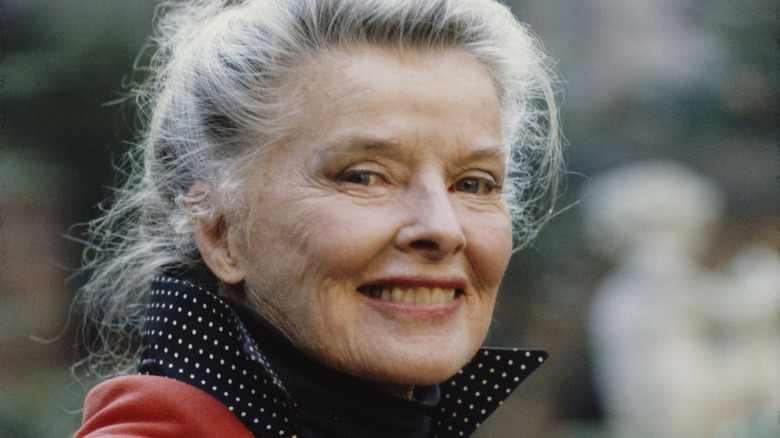The Truth About Lauren Bacall's Friendship With Katharine Hepburn
Katharine Hepburn may not be the first name that comes to mind when you think of Lauren Bacall, but in fact, the two were close friends for around 50 years. They met during the filming of "The African Queen," starring Hepburn and Bacall's husband, Humphrey Bogart. Bacall came to see Hepburn as a mentor and often turned to her for advice. It was Hepburn who convinced Bacall to leave her second husband, actor Jason Robards, after a turbulent marriage.
In her memoirs, Bacall wrote that Hepburn was a contradictory person: "She was loyal — demanding — pure and purely demanding — open — reserved — formally informal — proud — intimidating — exasperating — funny — touching" (from "By Myself and Then Some," via Vanity Fair). She said that Hepburn, whom she called Kate or Katie, was one of a kind. Even competing against each other for a Tony Award in 1970 didn't diminish the friendship, although there was some brief awkwardness when Hepburn asked Bacall to accept the award for her when she won. Hepburn didn't win and Bacall did, and received a highly complimentary letter and self-portrait from Hepburn as a sort of apology (via YouTube).
Early Careers
Hepburn and Bacall were somewhat into their careers by the time they met. Hepburn was nearly 20 years older than Bacall and had been one of the bigger box office draws during the 1930s (via Biography). Bacall was just a kid as Hepburn's career was ramping up, but she got her own start in Hollywood in the 1940s.
According to Biography, Bacall's real name was Betty Joan Perske, and she hailed from New York City, where she was raised by a working class family. Somewhat in line with her upbringing, Bacall's first job in show business was as an usher at a theater, but before long her talents landed her a spot on stage in productions both on and off Broadway. She was offered a screen test in 1943 and soon after she took her now famous stage name and her own career was underway. At just 19, she appeared in her first film — 1944's "To Have and Have Not" — where she met her future husband, Humphrey Bogart.
Making 'The African Queen'
It's not too surprising that filming of "The African Queen" ended up being a bonding experience for the cast and crew. It was filmed in 1951 in the jungles of what's now the Democratic Republic of the Congo (then the Belgian Congo). They were far from any town or stores. Bacall tagged along to help out with meals and with transporting things. No one had an assistant with them, and everyone camped together and helped each other out, according to Angela Allen, the film's continuity director (via Vulture).
Bogart and Bacall's son, Stephen, also remembers some of his parents' horror stories from the shooting of "The African Queen," including how his father wasn't fond of leeches (although, who is?) and had several run ins with the water-dwelling blood-suckers during the production. Another notable moment was the morning his mother woke up to find the floor of her tent moving — because it was covered with ants, which immediately started biting her. The whole cast had to move camp, according to the New York Post. After going through all that together, Hepburn and Bacall were friends for life.
Making 'The African Queen,' Part 2
Bacall said in a 2005 interview that she thought Hepburn admired her behavior during the more than eight weeks they spent in Africa making the film, because Bacall was unpretentious (via YouTube). Hepburn, on the other hand, was "bossy," according to Allen in her Vulture interview, not always trusting Allen's word about continuity between shots, with Allen pointing to one instance where Hepburn dug in her heels and refused to change her hat and gloves based on notes of the shots taken the day before. She only made the change when director John Huston backed up Allen saying it was her job to keep track of that sort of thing. However, Allen did say that Hepburn was ultimately caring about her and the rest of the crew.
In a 1987 appearance on "The Tonight Show with Johnny Carson," Bacall remembered how nearly everyone in the cast and crew got sick from drinking contaminated water while filming on location. Bacall, Bogart, and director John Huston were the only ones who avoided illness — Bogart and Huston by drinking alcohol instead. She described sleeping in huts made of bamboo and palm leaves with earthen floors — hence the ant problem — and sitting outside in the extremely hot temperatures, when a Belgian doctor warned her to stay out of the sun. She called it a "fascinating" and "wonderful" experience (via YouTube).
Bogie and Tracy
Bogart also befriended Hepburn on the set of "The African Queen," so when they got back to the U.S., Bogart and Bacall started spending time with Hepburn and her partner, actor Spencer Tracy. Hepburn and Tracy had a relationship that spanned three decades, but they kept it hidden. This was due to the fact that Tracy was still married to Louise Treadwell, a former actress herself. The two had been married in 1923, but had been living seperately for years. However, Tracy was a devout Catholic and refused to get a divorce from Treadwell (via Britannica). Bacall wrote that Hepburn was "blindingly" in love with Tracy. Tracy and Hepburn starred in nine films together over the course of their long relationship (via Biography).
They often visited the Bacall-Bogart household when Bogart was seriously ill, prior to his death in 1957, according to Vanity Fair. Hepburn's friendship during that time was especially important to Bacall, who said in the same 2005 interview that Hepburn respected the way she acted during Bogart's illness, and that Hepburn was very careful with her in the wake of his death (via YouTube).
Writing their memoirs
Bacall and Hepburn worked with the same editor, Robert Gottlieb, while writing their respective memoirs. He recalled that Bacall didn't need any help with the writing; she just needed a place to work, so he got her an office at Knopf, his publishing company. She wrote her book by hand and had typists transcribe it at the end of each day. He remembered that they fought over the picture chosen for the back cover of the book. He wanted one of Bacall and Bogart, but she insisted it was her book only, not Bogart's. Gottlieb won the argument, and the picture stayed. He said other than that, Bacall was easy to work with. The book found its way to the top of the best-sellers list and earned a National Book Award, according to Indiewire.
Hepburn was a different story. He described her autobiography "Me: Stories of My Life" as self-absorbed and not completely honest, though he thought the title was appropriate. He had worked with Hepburn on her previous book, "The Making of The African Queen: How I Went to Africa with Bogart, Bacall, and Huston and Almost Lost My Mind." That work experience, he said, was easy (via Indiewire).
Until the end
In her autobiography, Bacall remembered the last time she saw Hepburn before Hepburn's death in 2003. They looked at books featuring pictures of Bogart and Tracy, and Bacall talked to Hepburn about them. Though Hepburn was suffering from dementia, she seemed to remember them. When Bacall went to leave, Hepburn asked her to stay, which she did for another half hour, after which Bacall kissed her friend several times on the cheeks. Hepburn said, "Thank you" (via Vanity Fair).
Bacall lived for another decade, having also survived Bogart, Tracy, Huston, and many other figures of Hollywood's golden years. In her second autobiography, "Now," she reflected on her years of being alone. She continued to act until the end of her life, receiving her only Oscar nomination in 1996, and winning an honorary Oscar for her overall film work in 2010, according to The Hollywood Reporter. In 2014 she died of a stroke at age 89.
